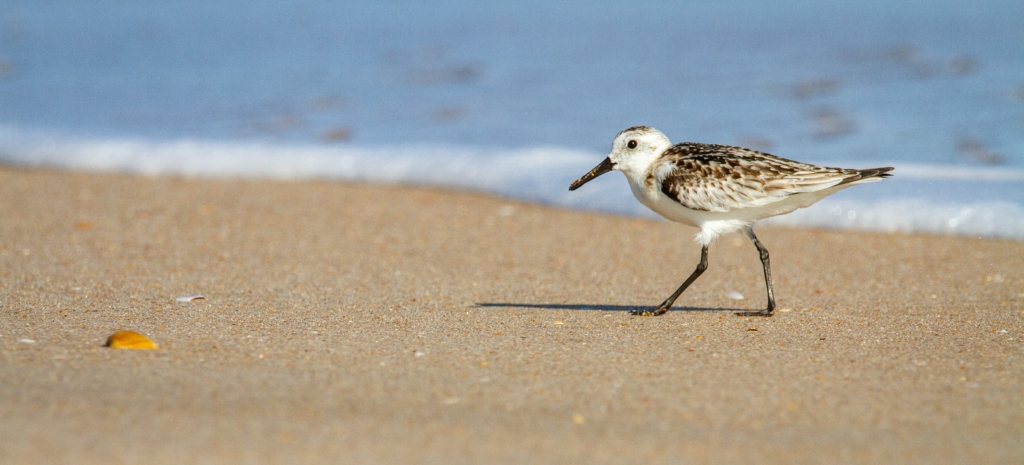
Standardized and interoperable data – contributed by many individual projects – are needed to make broad inferences about wide-ranging migratory species beyond the site-specific level. RWSC is providing a forum to coordinate offshore tracking studies in the U.S. Atlantic Region with leadership by the RWSC Bird & Bat Subcommittee.
Below, read more about:
All over the world, researchers trap, tag, and release birds and bats to track their movements with radio- or satellite-based technologies, from local to hemispheric scales. These tracking studies provide otherwise unattainable data on animal movements that are essential to informing conservation and management.
Early and on-going coordination of tracking studies is central to effective study planning, efficient allocation of resources, robust sampling, standardized workflows, and analyses that make the best use of available information. Coordinated tracking is especially important for offshore studies, due to technological challenges with collecting movement data in offshore environments, large information gaps for many taxa that fly offshore, and data needs to assess and monitor risks at site-specific and regional scales.
Coordination of offshore tagging studies across projects allows researchers to maximize population level inferences from individually tagged animals, minimize animal safety and welfare risks, and most effectively leverage time, funding, and other resources for monitoring efforts. Involving species and subject matter experts can provide opportunities to leverage resources, maximize information gains, and help facilitate the use of best available science when planning and conducting studies.
State, federal, and industry funders of bird and bat tagging studies, as well as the broader research community, have the common goal of understanding the behavior and movements of birds and bats in U.S. Atlantic waters. Some regional studies address anthropogenic impacts on marine wildlife or questions of basic ecology and natural history.
RWSC facilitates information sharing across offshore tracking studies to support effective data collection that can inform site-specific and regional-scale analyses. This coordination will be implemented through the Bird and Bat Tracking Research Framework. Planned activities in 2025 include:
For more information and to get involved, please reach out to RWSC Bird & Bat Subcommittee Coordinator Zara Dowling ([email protected]).
The RWSC Bird & Bat Subcommittee is working on adding layers to the Research Planning Map that depict:
Monitoring Protocols and Guidance for Automated Radio Telemetry Studies at Offshore Wind Farms
With funding from New York State Energy Research and Development Authority (NYSERDA), a project team from USFWS, Biodiversity Research Institute, University of Rhode Island, and Birds Canada developed a series of interrelated products to guide and inform the deployment of automated radio telemetry technology in relation to offshore wind energy development in the U.S. Atlantic. The protocols include guidance for deploying Motus stations on offshore wind turbines and buoys, a station calibration tool, a study design tool, a data framework, and a monitoring framework.
The RWSC Bird & Bat Subcommittee and Data Governance Subcommittee recommended repositories for long-term archiving of bird and bat movement/tracking data.
Using these repositories and their existing standards for data management will ensure that bird and bat data are interoperable, discoverable, and reusable. View the recommendations.